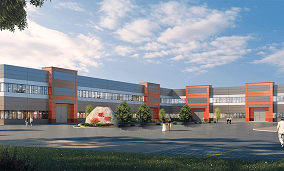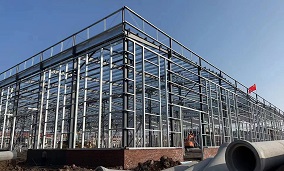Steel Structure Building Construction – Construction Technology for Large Steel Structure Sliding Installation

1. Main Technical Content
Computer-controlled integral jacking and lifting technology is an advanced installation technique for steel structures and large equipment. It integrates machinery, hydraulics, computer control, and sensor monitoring technologies. It overcomes limitations inherent in traditional lifting methods and large cranes regarding lifting height, lifting capacity, structural jointing, and worksite constraints. Construction using this technology is safe, reliable, mature in process, technologically advanced, and offers significant economic benefits. The principle employs "flexible steel strand load-bearing, hydraulic cylinder clusters, and computer-controlled synchronous lifting". During lifting or jacking operations, a computer precisely controls the synchronization of all points.
2. Technical Indicators
The determination of the lifting or jacking scheme must simultaneously consider the strength, stiffness, and stability of both the load-bearing structure (permanent or temporary) and the steel structure or equipment being lifted. The overall structural behavior under construction loads must be verified through calculation, including the forces acting on each lifting/jacking point to determine the required jack capacity. The load-bearing capacity and overall stability of the construction supports (or lower structure) and foundation must be verified to ensure sufficient safety under the most unfavorable conditions. The allowable tolerance for synchronization differences between acting points during construction should be reasonably selected through calculation.
The principles for selecting the lifting method are: firstly, to minimize the height of the load-bearing structure to ensure its stability; and secondly, to guarantee the stability of the steel structure or equipment during lifting and its safety upon positioning. The fundamental principles for determining the number and location of lifting points are: primarily ensuring the stability of the steel structure or equipment during the lifting process. The number of lifting points should be minimized while ensuring safety and quality. The lifting equipment itself must meet the design load capacity requirements. The selection principle for lifting equipment is that it must satisfy the force requirements during lifting, be structurally compact, robust and durable, easy to maintain, and meet project needs (such as stroke, lifting speed, safety protection, etc.).

3. Main Technical Features of the Sliding Method
The sliding method has broad applicability. Beyond unidirectional trusses, it can also be applied to structures with lower stiffness, such as bidirectional trusses or space grids, by increasing support points (reducing spans), widening the assembly platform, and increasing the number of trusses assembled simultaneously on the platform.
The propulsion device for sliding can utilize computer-controlled synchronized hydraulic crawlers. This equipment features a high degree of automation, convenient and flexible operation, good safety, high reliability, wide applicability, and strong versatility.
4. Main Technical Measures for the Sliding Method
Preparation of Construction Scheme: Develop a construction scheme to guide the work, including: sliding unit division, assembly platform and slide rail erection, high-altitude assembly, traction system, strip-by-strip sliding or cumulative sliding, lowering and positioning, construction monitoring, emergency response plan, etc.
Erection of High-Altitude Assembly Platform and Truss Assembly.
Installation of Slide Rails.
Installation of Synchronous Sliding System.
Stress and Strain Monitoring: Ensures construction proceeds in a controlled state.
5. Scope of Application
(1) For large-span roof structures and steel structures such as stadiums, theaters, aircraft hangars, and steel skybridges (corridors), where ground assembly conditions exist and good peripheral support conditions are available, integral jacking and lifting technology can be employed.
(2) Integral lifting of ultra-high components such as steel mast antennas for TV towers and power station boilers.
(3) Integral lifting of large equipment like the main girders of large gantry cranes and boilers.



